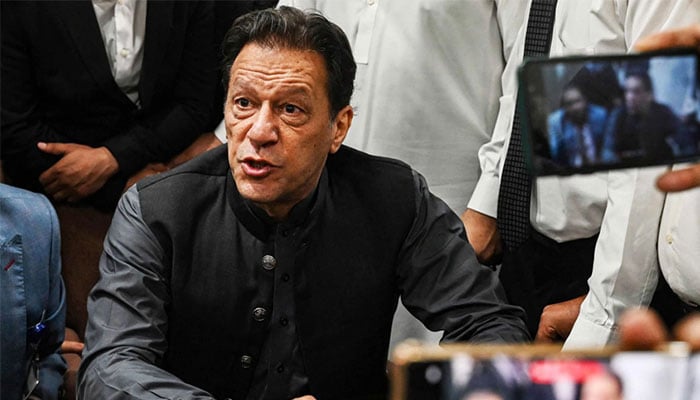Indian women's cricket - Setting sail with anchor down
Posted By: Gaagu on 20-11-2018 | 01:05:48Category: Political Videos, NewsOver the course of 15 days, the World Twenty20 is expected to beam the women's game brighter than ever. The buzz for the tournament is in no small part due to the success of the 50-over extravaganza last year, which itself was helped along by India's participation in a sold-out Lord's final. Given how the cricket populous and economics work, it is no secret that the health of Indian cricket is crucial for the health of the women's game at the global level.
However, while India's top players were duly recognised and rewarded, little has been done to strengthen the roots of the women's game in the country. Harmanpreet Kaur's record century in the tournament opener has set the tone of interest levels in the tournament, and when they play Pakistan in their second group game in Guyana, more eyeballs will be trained on her team than ever before. But scratch below the surface and the difficulty of being a female cricketer in India becomes readily apparent.
All work and no play
Shubhangi Kulkarni, a former India cricketer who runs a sports shop in Pune, has witnessed a major trend since India's run to the World Cup final. In that time, the number of girls wanting to buy cricket gear and enquire about coaching academies has risen by seven to eight times.
Yet she notes the lack of facilities for players at grassroots level - there are very few academies for girls to train in, and they are not always close by. "Everyone cannot become an international or a state player," she says. "There are so many who would want to play just for the love of it. And for those people, if you give them facilities, they will be interested in coming."
With very few clubs and even fewer tournaments, girls grow up not playing enough cricket matches. Those interested in pursuing the game are left with routine training and practice sessions at their clubs, something that doesn't retain the element of fun in the game.
It is a problem that roots in from the school level. Kulkarni explains: "There are some local tournaments which run for a week. If their school wins, they go on to play district and state level matches. If they don't, that is the end of their cricket. If you see the boys, they are playing all through the year. If a girl is interested at school, and if cricket is not available, she is going to go and play some other sport."
There are no tournaments organised by the BCCI before the Under-19 level. The responsibility of hosting Under-16 tournaments, which were in place before the BCCI took control of women's cricket, has been passed on to different zones, and their erratic attitude has resulted in a 'let's see if it happens' situation. While South Zone has been more disciplined in this regard, that has not been the case elsewhere.
"It is just about having someone to take an initiative and interest in this," Kulkarni adds. "That is what the administration is there for. Only if you organise tournaments, will you have girls coming."
To further complicate matters, BCCI has come up with a new rule that a girl cannot play more than four years of Under-19. Thus, if a talented prospect comes into the scene at 13, she will have to be good enough to make the cut to the senior level or Under-23 at 17, or not be eligible to play cricket for a few years. It gets worse if the girl starts off any younger.
Those familiar with the costs involved say that it should not cost the BCCI more than Rs 2 Crore (apart from ground fees) to organise an Under-16 tournament, taking into account the expense of food, board and air travel of all the 20-member teams, their coaching staff and match officials.
A lot of pain, no (financial) gain
As the levels go higher, there isn't any merrier news. Akanksha Kohli, a Karnataka player, last played a BCCI-organised match in January 2018. Her next fixture is slated for December. In between, she had an opportunity to play in two Karnataka Premier League exhibition games and another corporate-sponsored match in the UK. That's it.
Lack of matches directly results in lack of money. If a senior player gets to play all the matches representing her state - with her team reaching the final in the 50-over and 20-over formats - she will end up earning around Rs 1.5 lakh in a year. As one of the cricketers puts it, "Not only is the amount ridiculously low, but it also isn't paid timely." A player gets a maximum of only two BCCI organised tournaments for senior state teams to play in. There is no equivalent of other prestigious men's tournaments like Duleep, Deodhar or Irani trophies. It gets slightly better if a player gets selected for the Challengers Trophy, where the 45 best players from the country play, or if she is also eligible to play Under-19 and Under-23 games. Jemimah Rodrigues might be a rare exception in this, but other than that it's a miserable state to be in.
Not only is the amount earned by playing BCCI-organised matches miserly but it also takes away from the player's other source of income.
Kohli is one of the lucky few, coming from a sound financial background, working with her mother who runs a stable business. However, before that she used to work in a multi-national corporation. Getting up early in the morning, she would go for practice, head for a 10-6 job, and do fitness training in the evening. "I had to plan in a way that I couldn't take sick leave or vacations. My entire leave went in playing tournaments."
With only half a heart in their work, cricketers in private organisations struggle to get promotions or pay hikes. "Who would want a boss who is taking long offs and coming late to work?" asks Kohli. In the government sector, it's primarily Indian Railways that has proved to be a boon for female cricketers. However, except in rare cases, only players less than 25 years old are eligible to get a job there. If they don't, it's a long struggle.
Some of them double up as coaches for younger girls, or in many cases, give up on their cricket ambitions. Kohli speaks from her experience and says, "I am lucky that my parents are there to support me. Some people just don't know what to do. That's the reason they quit. I have seen my own seniors quit for so many reasons. If someone asks me, 'Is playing cricket secure?', I would say, 'No, unless you're playing for the country. It's your fate, and playing for India is a long shot.'"
Former cricketer Mamatha Maben, who coaches the Karnataka women's team, adds: "I've seen so many talented girls drop out of cricket because of financial reasons. Even those who are financially well-off, leave when they get better job offers. When they are getting Rs 8-12 lakh per annum (elsewhere), why would they stay and earn Rs 30,000 here? It's only for the love of the game that you can play. The only people who are secure are those who go to the top and get contracts. How much injustice is there that the next feeder level is so distant away?"
While there are social issues beyond the control of the board when it comes to bringing girls into cricket - and retaining them after the age of 20 when, as Saurashtra Cricket Association's former secretary Niranjan Shah says, "girls get married and don't want to pursue playing any further" - for those who do become interested there is an absence of a structure that harnesses talent. Thereafter, with a limited number of matches and no financial security, how are the girls expected to continue pursuing their dream?
While BCCI has done better in the last few years by providing contracts to the national players and increasing the pay for the state-level cricketers, has it done enough to make playing cricket a viable option? Not really. The improvement in pay and the introduction of an Under-23 structure is only a matter of relative happiness - the upgrade is still not good enough for a decent living.
One of the coaches observes: "In Australia, I'm given to understand, a domestic player gets INR 20 lakh. And the rest are touching crores. Over a period of time, if other countries don't catch up, migration will happen. A seriously skilled player can go settle over there. Rs 20 lakh is decent money for a domestic player, right?"
There has been a unanimous call for awarding contracts to state level players, so that playing cricket not only becomes a reasonable means of living but also allows players to put their entire focus on the game. There was a proposal made to give contracts on a '5-3-2' lakh (INR) basis, as per the levels of seniority. Another possible solution could be to offer each player a Rs 3.6 lakh per annum contract. If that amount is given to 20 players from each of the 30 representing state sides, it will pinch BCCI by Rs 21.6 Crore. This would incentivise more women to play the game, and with a better talent pool available, the quality of cricket around the country would also improve.
The issue doesn't just end with the players. As per the Lodha recommendations, state team coaches cannot work in a private clinic or be a government employee. Given the pay-scale at which they work, this is not financially viable for them as of now, although they are hoping to get a better package as and when the recommendations are adopted.
No more multi-day cricket
At the ICC's AGM earlier this year, it was decided that T20 will be the format used to drive the women's game forward. However, while marking that as a crucial point, the international cricket body also left the decision to play Test cricket to the member boards, and decided that it won't give any push to promote it.
One of the members in the panel that took this decision explained the logic: "There are no other countries playing Test cricket, except Australia and England who are playing for historical reasons - the Ashes. That too only one Test. They don't play any other bilateral series. Even the countries that are playing Test cricket, their focus is on one-dayers and T20s."

With the governing body adopting this approach, BCCI decided that it was pointless to have multi-day cricket in its domestic calendar and removed it altogether. While on the face of it that might seem like an action-reaction situation, but not having first-class cricket at the grassroots level can bring its own set of problems.
One of the arguments is about the rotting of the base technique. The member of the ICC panel argues: "Why do people say that your technique will become better playing Test cricket? The technique that you need in T20s is different. In T20s, your focus is on getting runs. In Test cricket, you are mindful of not giving your wicket away."
However Maben sees that as a simplistic view, and counters with an explanation that draws on her experience of coaching the Chinese women's team. "All they were doing was slogging because that's what they had seen (on videos). Even for T20, you need a base structure from which you can evolve. You need to have a command over your top hand even to play horizontal shots. If it's totally bottom hand, then you can't survive.
"Even for bowlers, if they stop playing multi-day cricket at junior level, they will get into a mindset where they only want to curtail runs and not take wickets. They will lose the ability to develop wicket-taking balls or set batsmen up."
Irfan Sait, coach at the Karnataka Institute of Cricket, an academy that has churned out several India players, adds that the approach to cricket will become one-dimensional - something that could be especially harmful given the current state of women's cricket. "As of today, white ball or red ball makes very little difference at the domestic level. It is only the rules that govern these that are different. Otherwise, the power quotient doesn't change, neither does their perspective. For them, even in Twenty20, at the grassroots level it's about staying at the wicket, surviving, rather than hitting sixes and fours."
But far removed from their theories of the technical aspect is another issue that revolves around the mental preps of the game; the soft skills that are developed by playing long duration cricket that can come in handy in the 50- and 20-over formats.
Given the limited number of matches girls in India play, one area of their game that has been tested severely at the international level is the ability to bat for long durations. Players and coaches are in sync on the fact that playing multi-day cricket enhances patience and mental toughness. Ankeet Bawne, India A men's batsman, explains the difference: "In one-dayers, as a middle-order batsman, you know you have to bat only for a couple of hours at best. Your mind can rest at other times. In days cricket, you have to be alert all the time. The cost on your wicket is also a lot higher. One moment of distraction can undo all your good work.
"Even as a fielder, it may not be as intense as T20s but it tests your patience and fitness. When you walk out to field, you don't know for how long you have to be out there - for 40 overs or for two days. And there are times when a chance will come your way once in two hours. If you are distracted at that point, then it is a longer toil from thereon."
The question is while these skills are bound to develop, would they be of any use in the shorter formats? The unanimous belief is a resounding 'Yes'.
The ability to bat for an entire day and remain unbeaten would give players the confidence that they can bat through 50 overs and bring in a newer dimension to their game. Citing the example of India's World Cup final loss, the coaches believe it was the mental fatigue, more than any other issue, that cost them a game that was in their grasp.
Bringing back Test cricket has its share of criticism, as stated by the member of the panel: "If the sponsors are not interested, if the crowds are not coming, who are we playing for?" However, by uprooting days cricket from the domestic calendar, it is not only fracturing a part of a cricketer's skills but also damaging the future of Test cricket forever.
If an entire generation of cricketers grow up without having played cricket for more than 100 overs, and even if the standard of women's cricket continues to improve and becomes a marketable commodity, the players will be unable to play Test cricket. An experimental game would be nothing but a disaster show.
The ICC seems to have made peace with the bleak future of Test cricket. India, however, have the option of pushing for it on bilateral terms, but BCCI seems happy avoiding this.
"Women cricketers, at this stage, aren't asking for Test cricket. We have explained to them (the issues)," says Saba Karim, BCCI's Cricket Operations head, but this is far from ground reality. While cricketers don't wish to come on record, privately they confirm that they would "love" to play Test cricket.
A women's IPL, and the dynamics of economics
The larger belief of BCCI is that India does not have enough talented female cricketers to make a financially sustainable league right now. They aren't too far from truth on this, especially given that only three Indian cricketers have attracted the attention of foreign leagues - a reality check of the current quality. In such a scenario, finding sponsors, team investors and broadcast partners would be a challenge, making it difficult to create a commercially viable tournament.
What Indian cricket stands to gain by organising a league, however, is an improvement in the quality of its women cricketers. Even in a worst-case scenario, if BCCI don't find any monetary support externally and are left to bear all the expenses and stream the games on their website, informed estimates put the cost to the board at Rs 120 Crore or less.
A four-team T20 league can be played on a zonal basis, with each team playing one round against each other in every zone. A total of 60 Indian and 20 foreign players battling it out in 24 games would make for a competitive and cost effective option.
By allowing the top 60 players from the country to rub shoulders with the best of cricketers from around the world, with high-quality trainers and coaches, their standard of cricket is only bound to improve. Australia and England have seen healthy results in their T20 games following the initiation of WBBL and KSL. Even men's cricket in India has witnessed an improvement post IPL. The more India lags behind on this front, the more the gulf in women's cricket is bound to widen.
Right now, women's cricket in India is not a profit-making venture - certainly nowhere close to the marketing appeal of their male counterparts. And they will not be unless they play a brand of cricket that fills up stadiums on a regular basis. But it is for the BCCI to realise that they are the guardians of cricket in India, and as such they should operate in the interest of the game rather than for the profit of it - a point that finds mention as early as the second page of their constitution.
To put things in perspective, BCCI is projected to make a profit of Rs 2017 Crore from each season of IPL itself following the latest television deals. This is not to state that the board should drain out its resources, but have they given women's cricket the best structures and opportunities within their means? Clearly not.
In BCCI's last publicly released annual report (2015-16), the spending on all of women's cricket tournaments (international, domestic and age-group) was just over Rs 13 Crore. On the other hand, Rs 20 Crore was spent only in organising Men's Under-19 tournaments. The gulf only widens as the expenses of other men's tournaments at the grassroot level get added.
Except those who play for Indian Railways, the women players who have made it to the top are not by-products of the system but mere exceptions, who have made it through on the basis of their talent and hard work. Women's cricket is still largely a luxury only the privileged can afford. For the rest, it is a tale of endless sacrifices with an uncertain future and financial insecurity.
Their game will need a massive investment to push it forward, but it is a manageable one. Even without sponsors, BCCI would need to pump in no more than 200 Crores from its current pool of resources in order to host a women's IPL, upgrade players' pay, hold two or three more domestic tournaments and fund incentive schemes for the promotion of the women's game at the grassroots level.
The investment may not deliver returns, certainly not in the short term; much like how men's cricket in India failed to do in the first five decades of its existence. However, it will neither be a pinch on BCCI's pockets.
Whether BCCI want to make the first move to bring the best out of women's cricket or whether they want to wait for women's cricket to improve on its own and act thereafter remains to be seen.

 60 more criminals involved in the May 9 tragedy were sentenced
60 more criminals involved in the May 9 tragedy were sentenced
 Military Courts Sentence Perpetrators of May 9
Military Courts Sentence Perpetrators of May 9
 PTI founder praised the government
PTI founder praised the government
 We want to bring the negotiations to a logical conclusion by January 31, Sahibzada Hamid Raza
We want to bring the negotiations to a logical conclusion by January 31, Sahibzada Hamid Raza
 Five Thousand Note Banned? - Issue Under Discussion
Five Thousand Note Banned? - Issue Under Discussion
 Parachinar Situation Inside Story - DG ISPR Respond to Reporter
Parachinar Situation Inside Story - DG ISPR Respond to Reporter








